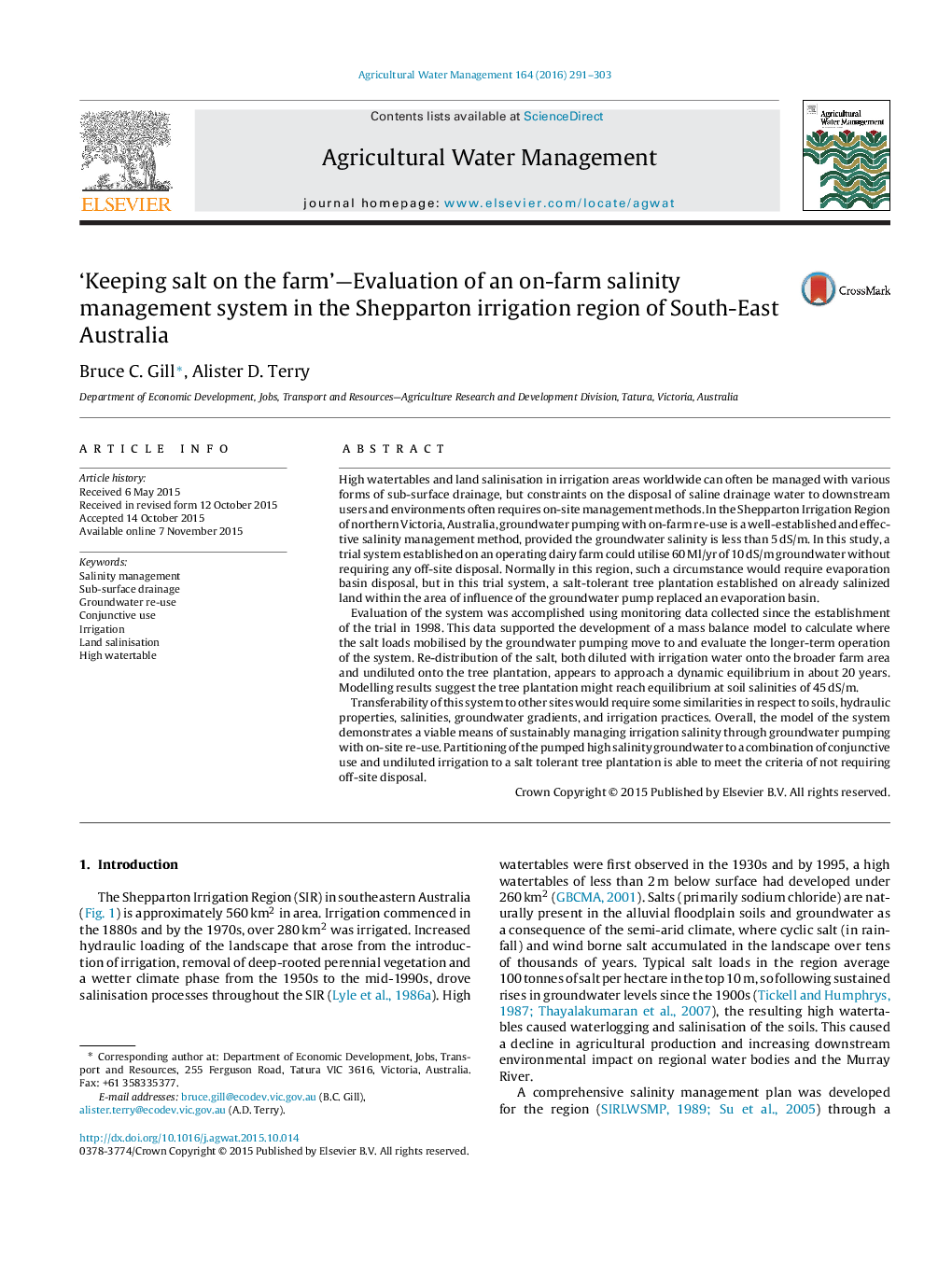| کد مقاله | کد نشریه | سال انتشار | مقاله انگلیسی | نسخه تمام متن |
|---|---|---|---|---|
| 4478382 | 1316369 | 2016 | 13 صفحه PDF | دانلود رایگان |
• Groundwater pumping is an effective irrigation salinity management technique.
• Effective salinity management was achieved through reductions in the watertable and increases in leaching.
• On-farm conjunctive re-use of 10 dS/m groundwater can occur without needing off-site disposal.
• Modelling indicated that salt loads in the disposal area root zone equilibrate after about 20 years.
• This approach could be applied in other situations where off-site disposal is limited.
High watertables and land salinisation in irrigation areas worldwide can often be managed with various forms of sub-surface drainage, but constraints on the disposal of saline drainage water to downstream users and environments often requires on-site management methods. In the Shepparton Irrigation Region of northern Victoria, Australia, groundwater pumping with on-farm re-use is a well-established and effective salinity management method, provided the groundwater salinity is less than 5 dS/m. In this study, a trial system established on an operating dairy farm could utilise 60 Ml/yr of 10 dS/m groundwater without requiring any off-site disposal. Normally in this region, such a circumstance would require evaporation basin disposal, but in this trial system, a salt-tolerant tree plantation established on already salinized land within the area of influence of the groundwater pump replaced an evaporation basin.Evaluation of the system was accomplished using monitoring data collected since the establishment of the trial in 1998. This data supported the development of a mass balance model to calculate where the salt loads mobilised by the groundwater pumping move to and evaluate the longer-term operation of the system. Re-distribution of the salt, both diluted with irrigation water onto the broader farm area and undiluted onto the tree plantation, appears to approach a dynamic equilibrium in about 20 years. Modelling results suggest the tree plantation might reach equilibrium at soil salinities of 45 dS/m.Transferability of this system to other sites would require some similarities in respect to soils, hydraulic properties, salinities, groundwater gradients, and irrigation practices. Overall, the model of the system demonstrates a viable means of sustainably managing irrigation salinity through groundwater pumping with on-site re-use. Partitioning of the pumped high salinity groundwater to a combination of conjunctive use and undiluted irrigation to a salt tolerant tree plantation is able to meet the criteria of not requiring off-site disposal.
Journal: Agricultural Water Management - Volume 164, Part 2, 31 January 2016, Pages 291–303
